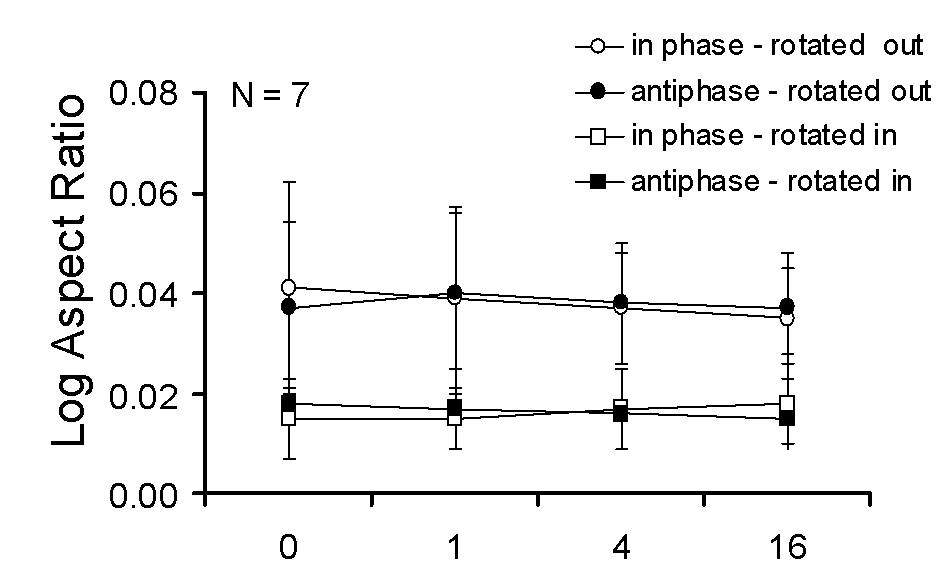We use a new objective measure of illusory contour strength, threshold reduction for aspect ratio discrimination, to examine the effect of dynamics and relative phase on the Kanizsa illusion. We found no dependence of illusory contour strength on the relative phase of flickering inducers (in phase, antiphase, or in quadrature phase) either for the standard Kanizsa square, or for modifications that facilitated or interfered with amodal completion. Comparison with a vernier acuity task indicates that the distance between the inducers, rather than the nature of the task, accounts for the insensitivity to relative phase.

Snapshots of the stimuli (from left to right): inducers presented in phase rotated out, antiphase rotated out, in phase rotated in, antiphase rotated in.

Mean threshold log aspect ratios lnrout
(circles) and lnrin
(squares) for shape discrimination with inducers presented in phase (open symbols), and in
antiphase (filled symbols). Error bars represent ±2 s.e.m., calculated across subjects' individual means of ln
Download the manuscript as pdf, courtesy of ScienceDirect
Related publication: vernier acuity, psychophysical analysis
Related publication: VEP analysis (f1,f2) of local interactions
Related publication: temporal phase discrimination
Publications related to visual texture and form processing
Return to publications list